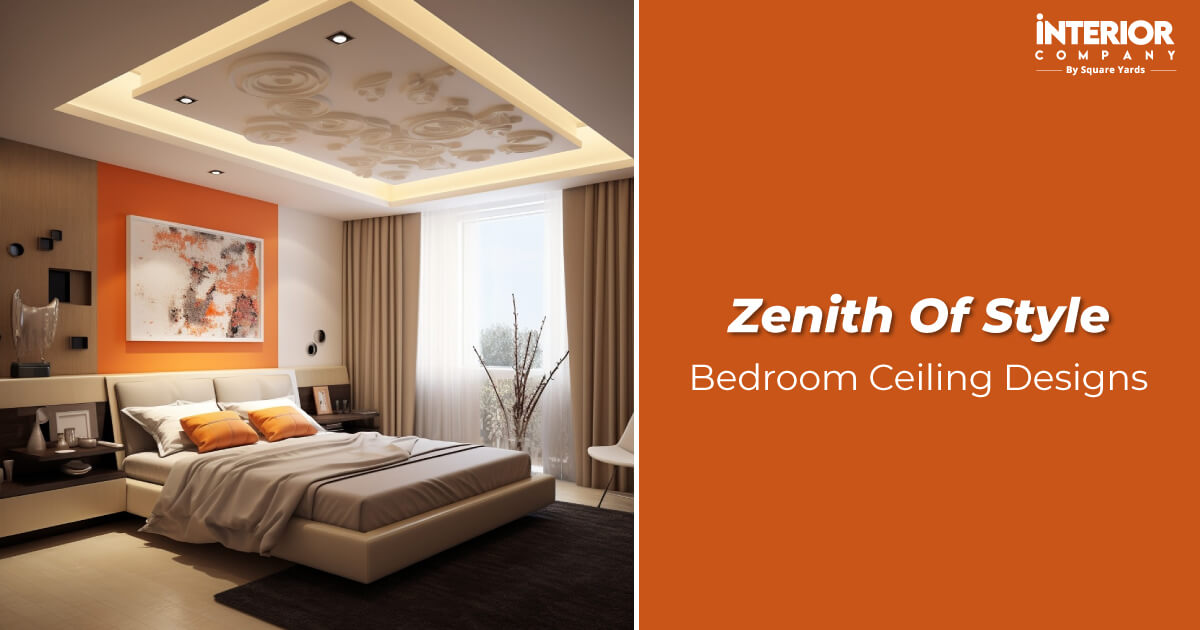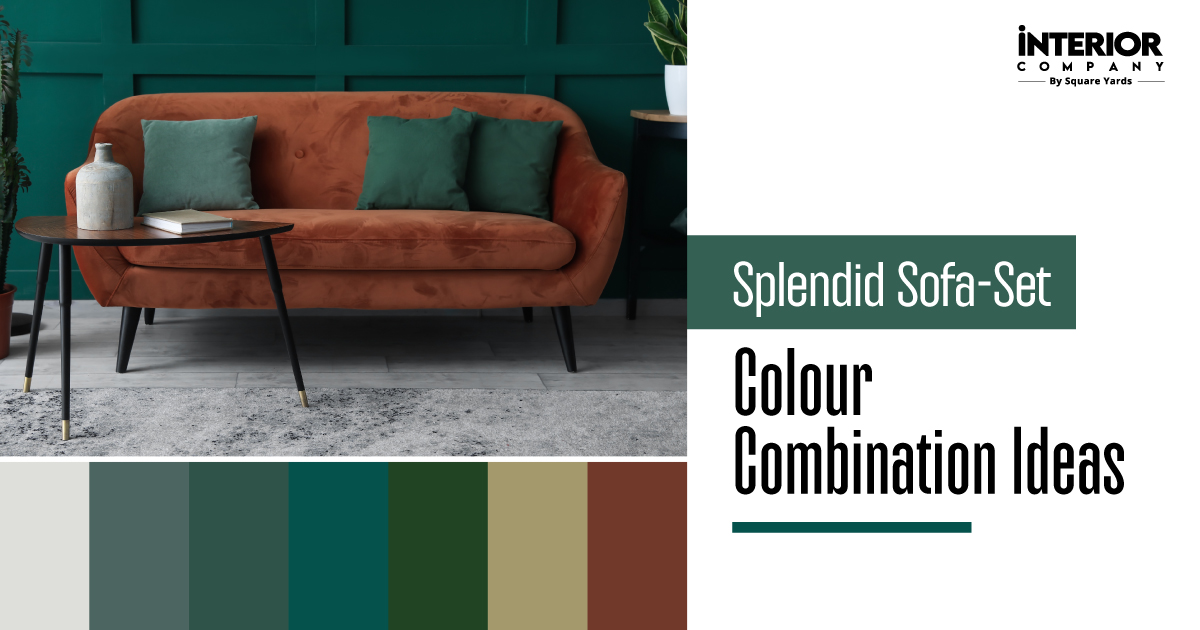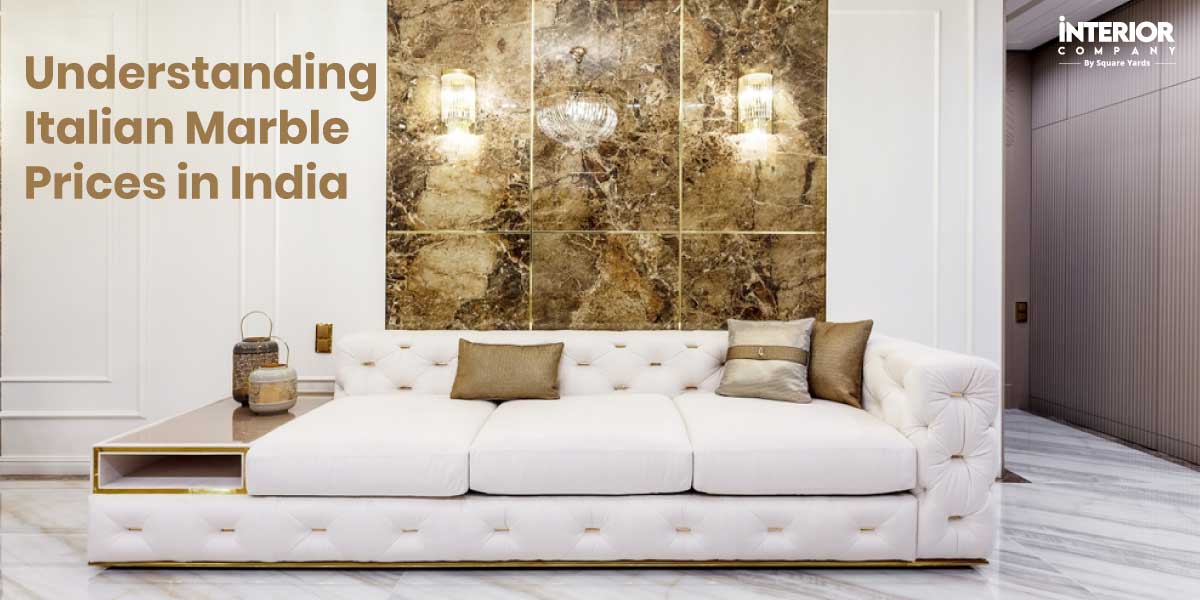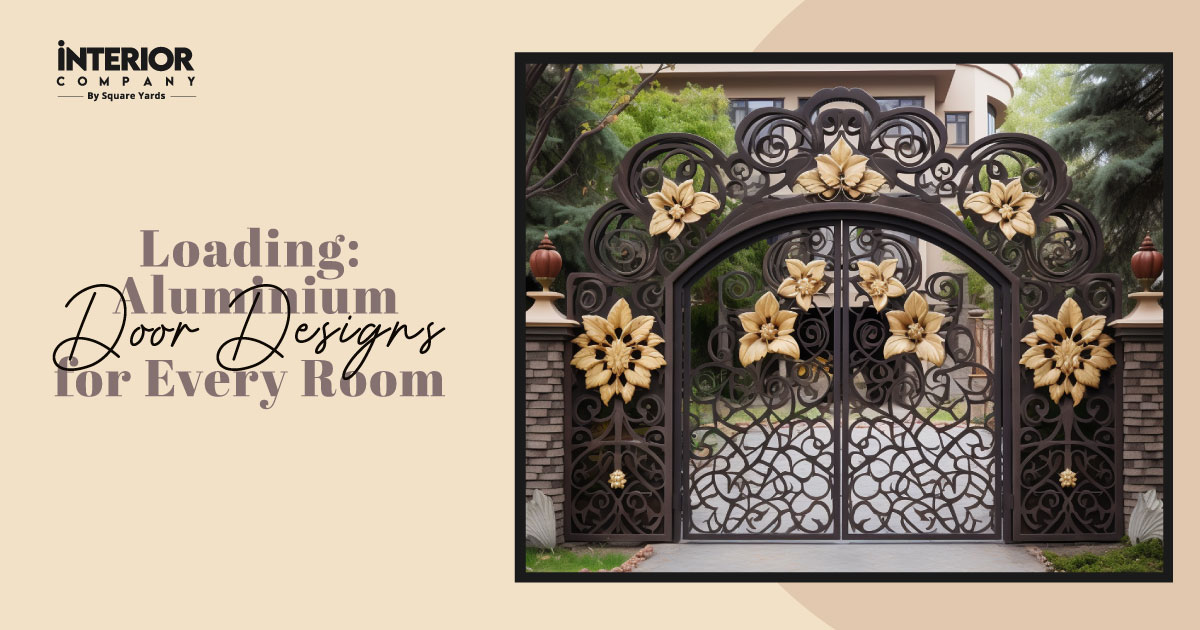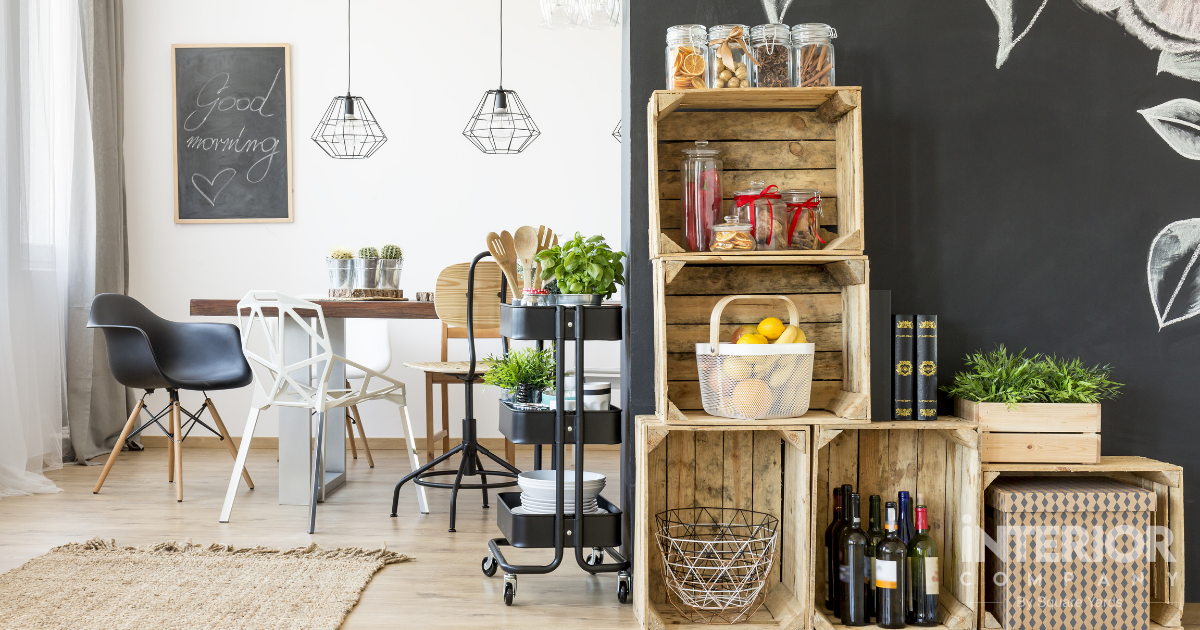- Home
- Trends
- Construction
- Materials
- Sustainable Construction
Sustainable Construction: Pave the Way for a Green Future
“The best course of action is to avoid creating. The second most feasible path is to create something extraordinarily valuable to address a problem that hasn’t been resolved.”
The world is facing a rise in temperature, soaring air pollution, dwindling delimited resources, amongst other environmental threats. One of the major industries driving this inferior situation is the construction industry.
| Did You Know? Global construction waste will nearly double by 2025 to 2.2 billion tons, and the building and construction industry contributes to 39% of the world’s CO2 emissions! A significant chunk of 28% is generated from operations, emissions for cooling, heating and illuminating buildings. Rest 11% is correlated with construction materials and building lifestyle. |
Table of Content
What is Sustainable Construction?
Traditional Construction is Wasteful
How to Make Construction Projects Sustainable?
Certification Required to Develop Green Buildings
Emerging Pillars in Sustainable Building Materials
Examples of Green Buildings Worldwide
Obstacles to Sustainable Construction
Sustainable Development: Construction Waste Reduction for a Cleaner Future
Are we too deep to emerge ourselves out of this debris?
Keeping the statistics in mind, it’s clear that sustainable construction is the way to go! It’s high time to hinge on sustainable construction practices. The world is making every possible effort to save the environment and reverse environmental depletion.
We can witness a surge in investments rooted in green building projects. The construction industry is on the right track and heading in a sustainable direction.
Sustainable development in construction provides several benefits, including cost-cutting and resource savings.
But what is sustainable construction, and why is the world heading in its footsteps? These are a few questions that might be rolling over your mind. In this blog, we have covered everything that orients around sustainable design and construction.
Also Read: Types of Waterproofing in Construction
What is Sustainable Construction?
“Sustainable Development in Construction: Setting Standards in Construction.”
Source: Pinterest
Sustainable construction is the discipline of designing buildings and employing ecologically responsible and resource-efficient techniques throughout the life cycle of the building, from design, construction, maintenance, renovation, and deconstruction.
Developers are getting more inclined towards green buildings. For instance, funding for environmentally friendly building and development initiatives is rising. By 2021, the percentage of survey respondents who said they would develop 60 percent or more of their construction projects green is anticipated to grow from 27% to 47%. The World Green Building Council initiated this survey to understand the current and upcoming mindset of the developers towards sustainable construction.
Traditional Construction is Wasteful
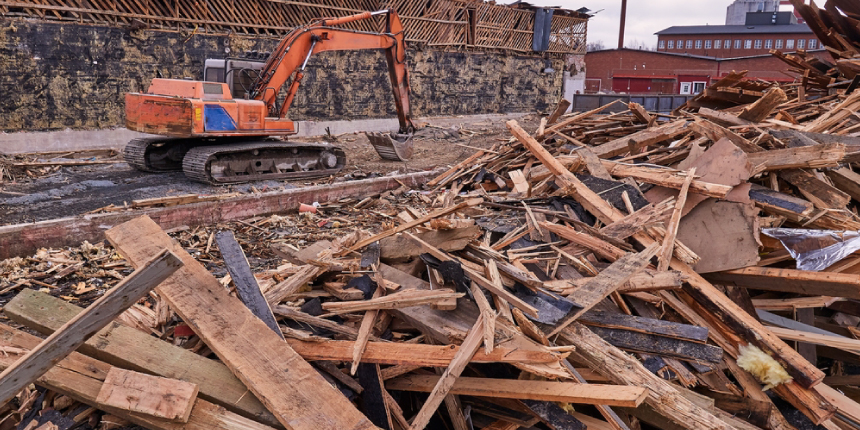
Traditional construction processes produce a large amount of waste material. In fact, up to 30 percent of supplies delivered to the construction site end up as waste. In 2018, the total waste produced by the building and construction sector accounted for about 600 million tonnes.
The only way to reduce this colossal figure is to focus on sustainable architecture as much as possible. It emphasises decreasing waste, recycling materials whenever possible and reusing construction materials.
Over the past two decades, sustainable construction has been gaining ground, and the growth can be witnessed in prominent green building projects worldwide. The introduction of LEED (Leadership in Energy and Environmental Design) in 2000 escalated the development of sustainable growth across the globe.
The US Green Building Council introduced the LEED grading system to provide a mechanism for buildings to quantify and exhibit their sustainability. Since then, there have been an increasing number of green building initiatives.
Now that you are acquainted with the waste generated from traditional construction techniques and the need for sustainable contraction let's explore the practices that can support making construction projects sustainable.
Also Check: What are Some Important Factors that Influence Construction Cost
How to Make Construction Projects Sustainable?
Several sustainable construction practices aim to take the edge off the environmental impact rooted in new constructions. Here’s the list of the top five sustainable construction practices that the developer must consider when contracting a green building.
Doing the Groundwork Ahead of the Construction
Incorporating sustainability from the planning and design stages is one of the best methods to produce a sustainable project. At this point, services like Iterative Energy Modeling and Commissioning Authority can be used.
By doing this, projects will be more environmentally friendly from the initial stage and require lesser rework at later stages and during renovation.
Deploying Non-Toxic and Sustainable Building Materials
It is advantageous for human health and the environment to use non-toxic and sustainable building materials. The least processed natural materials make for the most effective, non-toxic alternatives. Chemicals that can emit toxic gases shouldn’t be present in these materials. Deployment of such practices will help reduce CO2 emissions from the building and construction sectors.
Count on Reduce and Reuse of Resources
One of the critical advantages of constructing sustainable projects from a financial standpoint is that they use fewer resources than traditional and other types of construction. The idea is to use fewer resources and reuse those already used. Thus, sustainable construction limits the use of resources while developing the project.
It can involve conserving resources or designing a structure to consume fewer resources throughout the construction process. But it also implies that structures are created to facilitate the modification, dismantling, and repurposing.
Cut Down Construction Waste
Projects involving sustainable construction often include waste management practices. Reusing resources that may otherwise end up as waste is a key component of proper waste management. Waste management comprises trash reduction, recycling, and reuse for sustainable building projects.
Bank on Smart Buildings & Digital Solutions
Nowadays, construction companies bank on sustainable building technology to construct environmentally friendly projects. For instance, Artificial Intelligence, the Internet of Things (IoT), and sensors can be used to forecast and examine how buildings run and how their resources are being used.
Additionally, well-known building technology solutions make the entire task much more accessible. Once you prepare a checklist and get in touch with the experts, you will get all the necessary guidance. Predictions can be made using building information management (BIM) and life cycle analysis (LCA).Furthermore, on-site renewable energy sources will make construction projects more sustainable.
Certification Required to Develop Green Buildings
Nothing comes for free and without permission in the building and construction industry. Just planning and putting forward the practices won’t be enough. Initially, you must secure a green building certificate to meet the sustainable construction criteria. The most well-known ones are Mostadam, Estidama, ASHRAE, and LEED. Green construction requirements can significantly affect your project’s overall budget because they reduce expenses and the consumption of resources.
Remember that you should collaborate with knowledgeable advisors to execute these services. Your cost-savings and other benefits will be based on their knowledge and experience. You might have to pay some upfront costs to hire these advisors, but it will surely be less than the cost savings you will incur with sustainable building architecture. It will be especially true if you consider your annual savings over the long run.
Emerging Pillars in Sustainable Building Materials
The construction industry is frequently cited as one of the biggest polluters in the modern era. Some building materials, such as concrete, are used too often as construction materials. It is impossible to overstate the harm they cause to the environment. That is where sustainable building materials come into play.
People have become more aware towards the environment and are banking on more environment-friendly building materials.
Look out for the top sustainable building materials listed below.
Sheep’s Wool
Like wood, sheep’s wool has been around for a while, but contemporary environmental movements have discovered new applications. Sheep wool fibres can be used to insulate the building’s ceiling.
Additionally, sheep wool fibres are entirely renewable, making them one of the most environmentally friendly insulation types.
| Advantages | Disadvantages |
| Eco-friendly and can be more sustainable if sourced locally. | It can be more expensive compared to other available insulation materials. |
| Non-flammable | Chemicals are used for the process of wool disinfection and treatment. |
| Highly suitable for a damp environment as it absorbs and releases moisture. | |
| Easy installation and absence of glass fibres. |
Wool is an unusual natural material that can be used as a sustainable building material. However, putting sustainability first encourages creativity and presents several opportunities.
Bamboo
Source: Pinterest
Bamboo is a sustainable and biodegradable building material with many uses. You can find bamboo in countertops, floors, and wall coverings. It can thrive on damaged terrain and is the world’s fastest-growing plant. Additionally, it generates 35% more oxygen compared to trees.
Bamboo is a tremendously gratifying building material in many ways, but it can require a lot of upkeep.
| Advantages | Disadvantages |
| Entirely sustainable | Can quickly deteriorate if not properly cared for |
| Budget-friendly | Vulnerable to insects, fungus, etc. |
| It is strong and offers durability | Lack of regulation might lead to quality differences. |
| Easy installation |
Recycled Plastic
Source: Pinterest
Recycled plastic is increasingly used in the building industry as a reliable, long-lasting, and affordable substitute for other materials because plastic is pervasive and takes so long to degrade.
Waste plastics, for instance, can be used to strengthen concrete, create high-quality roofing tiles, or even create bricks that make building a home seem like playing with LEGOs.
Although the substance is adaptable and robust, many objections to its use still hold for its recycled equivalent. Therefore, its detrimental effects must be mitigated by ethical behaviour.
| Advantages | Disadvantages |
| Vigorous, water-resistant, lightweight & recyclable | Emits toxic gases |
| Affordable alternative to other sustainable building materials | Presence of unfavourable by-products |
| Reduction of plastic waste, i.e. plastic sequestration | Negative impact on the environment, such as ocean contamination |
It’s a good thing that plastic use is gradually declining, and utilising existing plastic rather than making more can add to the merits.
Newspaperwood
Source: Pinterest
With the help of this ground-breaking sustainable building material, paper production is turned around and returned to its wood-based origins. NewspaperWood, a technology created two decades ago by Mieke Meijer (Dutch Designer), combines unique stacking techniques and glue made without solvents to produce wood-like objects like furniture, pottery, or even clothing. The thickness of newspaper wood can range from paper-thin to extremely thick because of advancements in the manufacturing process.
Although more research and development are required, several applications in the building and construction industry are suited to its properties.
| Advantages | Disadvantages |
| Completely recyclable & biodegradable | Due to its strength capabilities, its use is limited as a structural component. |
| Water-resistant & flame-retardant | The size can’t exceed the newspaper’s size, which restricts its use in larger applications. |
Another material that shows promise, although its ability to handle mass production, still needs to be discovered.
Ferrock
Another greener substitute for concrete is ferrock, prepared from recycled steel dust and glass-ground silica. Dr David Stone created this sustainable building material after performing iron dust research at the University of Arizona. After hardening, the dust has characteristics similar to those of rocks, like concrete, and offers several benefits. The presence of such attributes makes the substance suitable for being used as construction material.
Let’s look at a few of them, along with some other factors that contractors should consider when using this material.
| Advantages | Disadvantages |
| Eco-friendly with the presence of 95 percent recycled materials | Less availability across the market |
| Low-cost, and it is prepared through a by-product, i.e. steel dust | Mainstream use of ferrock might result in increased prices of waste materials |
| Strong & flexible | |
| It doesn't deteriorate in saltwater or even sewage water |
Although the application of ferrock as a sustainable building material is still in its early stages, the information at hand makes it seem promising.
Examples of Green Buildings Worldwide
Buildings can be sized up in various ways, including their height, contrasting architectural styles, or analysing of their antecedents. But as environmental impact drives design, construction, and operations decisions in the age of climate change, a building’s “sustainability” and “green” credentials are becoming increasingly important.
Here is a compilation of five notable green building projects from around the globe.
One Central Park: Sydney, Australia

One Central Park is covered in vegetation from 250 different types of Australian flora and fauna, continuing the park’s theme at the building’s base. They make a striking statement, shade the structure, and have a lovely appearance.
Its dangling cantilever, which houses the most opulent penthouses in this skyscraper, is an engineering marvel. It uses 25% less energy than a comparable conventional building of the same size.
Bahrain World Trade Center 1 and 2: Bahrain
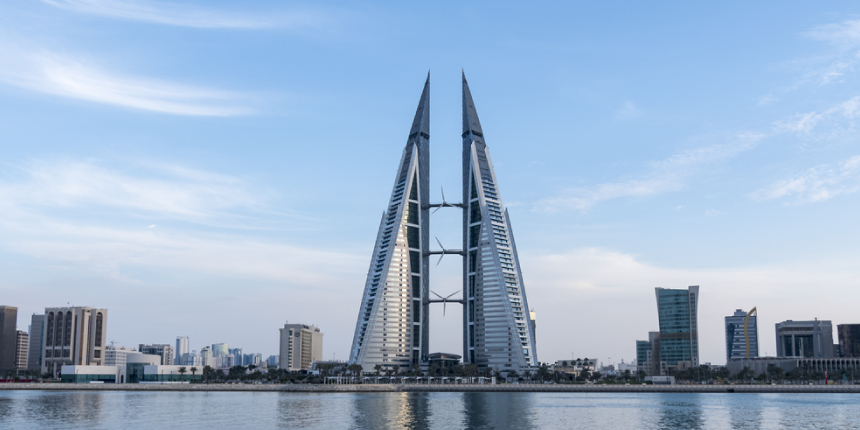
The amazing 787-foot-tall Bahrain’s World Trade Center towers are strategically placed to benefit from the desert winds that blow across the island. Three electricity-generating turbines are mounted on sky bridges that connect the towers.
Shaped like Arab dhow sailing ships, the towers assist direct wind to the turbines, which provide 15 percent of the overall electricity of the building. Evaporative cooling is assisted by reflective pools present at the tower's base.
Vancouver Convention Centre West: Vancouver, Canada
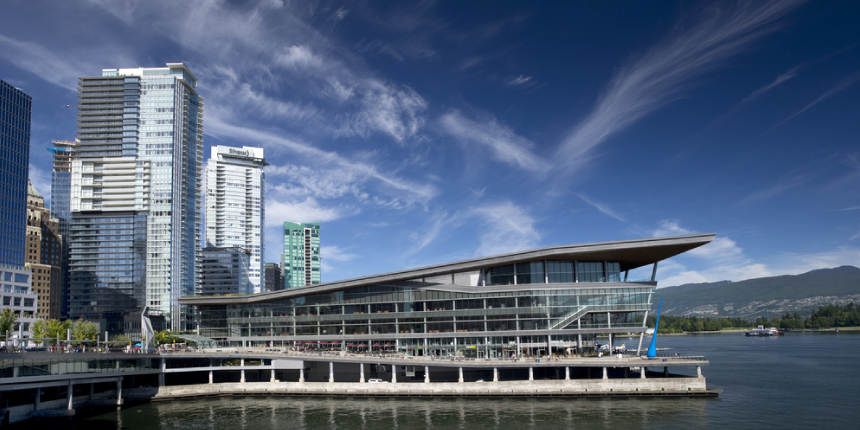
At the roof of the Vancouver Convention Centre West, the first sustainable project of its kind to receive a double LEED platinum rating, you can experience great things.
What's the buzz? To begin with, four European honey bee hives have been set up to pollinate the grasses and plants on the roof, which will help to retain heat in the winter and lessen its buildup during the summer. In addition, the sloping shape of the roof helps with seed dispersion and water drainage.
However, not all of the action takes place on the roof. A portion of the project is constructed over water on columns, supporting a marine ecology that includes local salmon, crabs, and shellfish.
Shanghai Tower: Shanghai, China
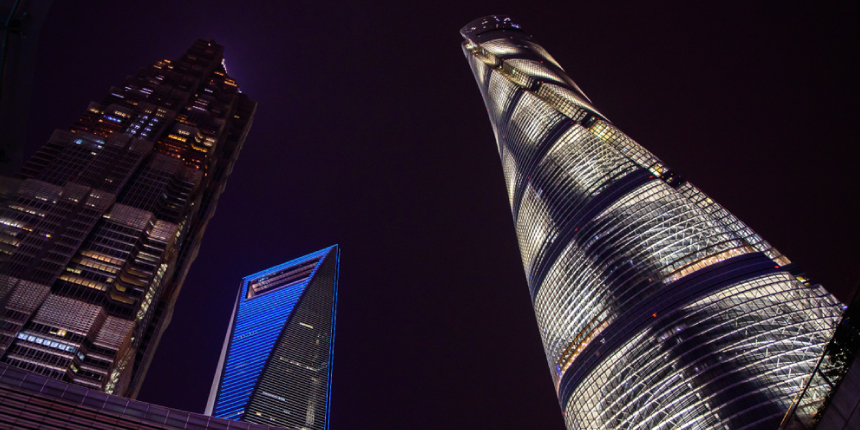
Shanghai Tower, the second-tallest skyscraper in the world at 2,073 feet, is both an architectural marvel and a sustainable one.
270 wind turbines built into the building’s facade power it’s outside lighting, and a transparent second skin wrapped around it creates a buffer of trapped air. This buffer serves as a natural ventilation system, lowering the overall energy expenses of the building.
The tower has a platinum Leadership in Energy and Environmental Design (LEED) certification and consumes much less energy than other skyscrapers because of such sustainable technology.
Suzlon One Earth: Pune, India
Opened in 2009 and used for office purposes
Suzlon, a supplier of wind turbines, has a world-class green headquarters, which shouldn’t be surprising.
The Suzlon One Earth campus, has a platinum LEED certification and produces some of its own electricity, with 80 percent of it coming from wind and 20 percent from solar. It is a net zero energy building because the remaining electricity is generated by its remote wind farms.
Obstacles to Sustainable Construction
Why aren’t all building firms currently completely green, given the advantages of sustainable construction methods? However, it would be nice if accomplishing something was that easy, but something else is needed.
In other words, if construction companies want to be sustainable entirely over the long haul, they must work hard to overcome some authentic and significant challenges to sustainability.
The construction company must make a significant initial investment in many of the sustainable building principles. For instance, you must be able to afford the high upfront expenditures of the panels and their installation if you wish to start running your operations on sustainable energy from solar panels.
While this is happening, the global demand for housing is surging along with population expansion, making it more challenging to stray from tried-and-true conventional construction procedures and experiment with new, more sustainable practices.
Sustainable Development: Construction Waste Reduction for a Cleaner Future
It will take more work to clear up the mess of construction waste. Poor order estimations or improper material cuts are the key reason behind the generation of useless scraps. Nearly 95 percent of the C&D is made up of demolition debris, much of it inevitable given destructive demolition techniques like explosives.
Construction companies are laying the groundwork for a zero-waste future by utilising sustainable constructions, recycled materials, intelligent asset management systems, avoiding demolition projects through adaptive reuse, and much more. The construction industry is already heading toward sustainable development to contribute towards nature conservation.
However, sustainable construction can be complicated, and businesses that are now embracing this fundamental shift in the construction sector are benefiting greatly. Initial prices may be greater, but the financial savings and positive effects on the industry’s reputation far outweigh any inconveniences or temporary higher costs. If this blog got you interested in sustainable construction practices, you can reach out to the experts at Interior Company to learn more!
**Images used are for illustration purposes only. Interior Company does not hold any copyright to the images unless mentioned explicitly.
Ready for a home transformation?
Let our designers assist you!
Recent Posts
Several sustainable construction methods include solar power, green insulation, smart appliances, low-emitting materials, cool roofs, biodegradable materials, rammed earth brick, self-powered buildings and much more.
The seven principles of sustainable construction are:
- Sustainable Design
- Reduction of Waste
- Durability
- Water Conservation
- Sustainable Building Materials
- Indoor Air Quality
- Energy Efficiency
Three types of sustainability are environmental, economic as well as social sustainability.
Related Category
- Exterior Design
- False Ceilings
- Furniture
- Tips and Advice
- Walls and Texture
















